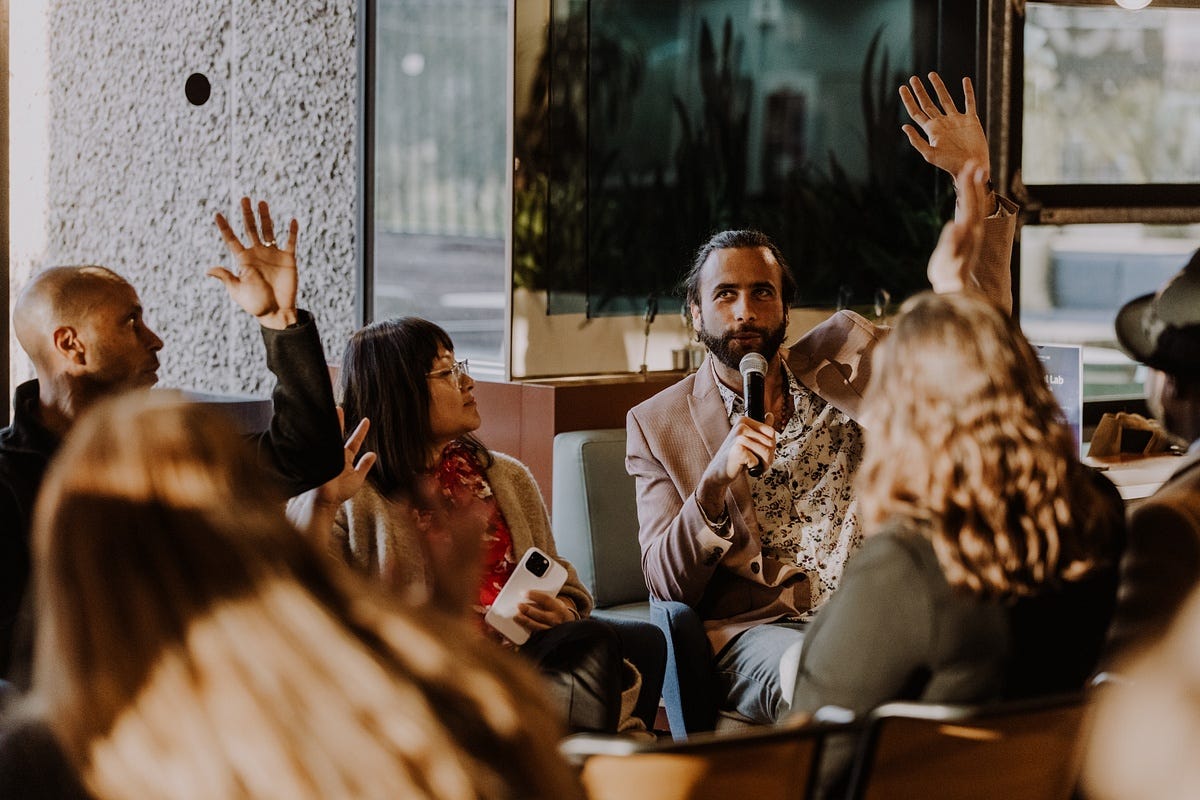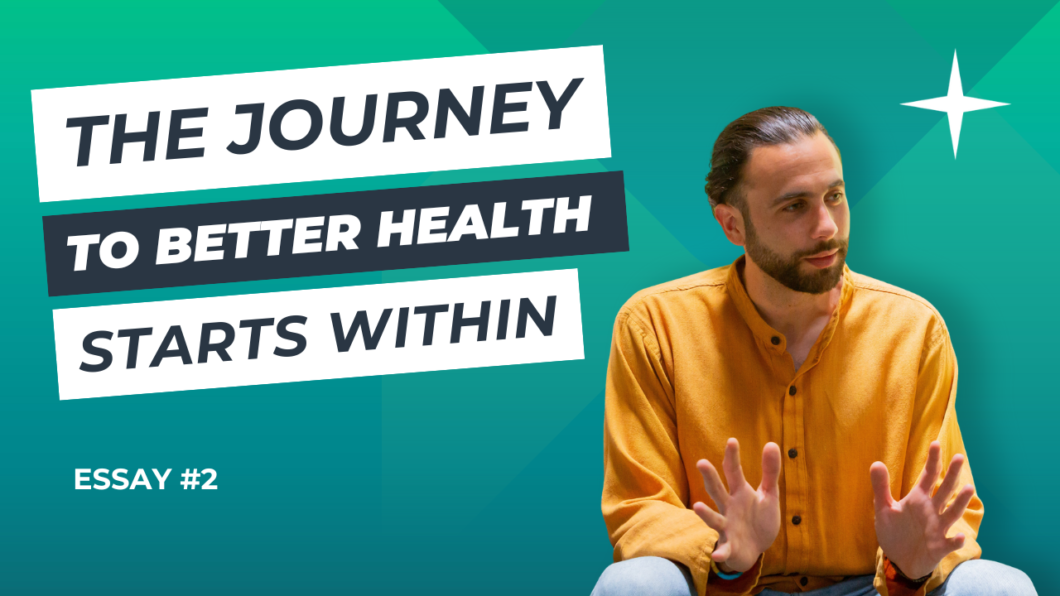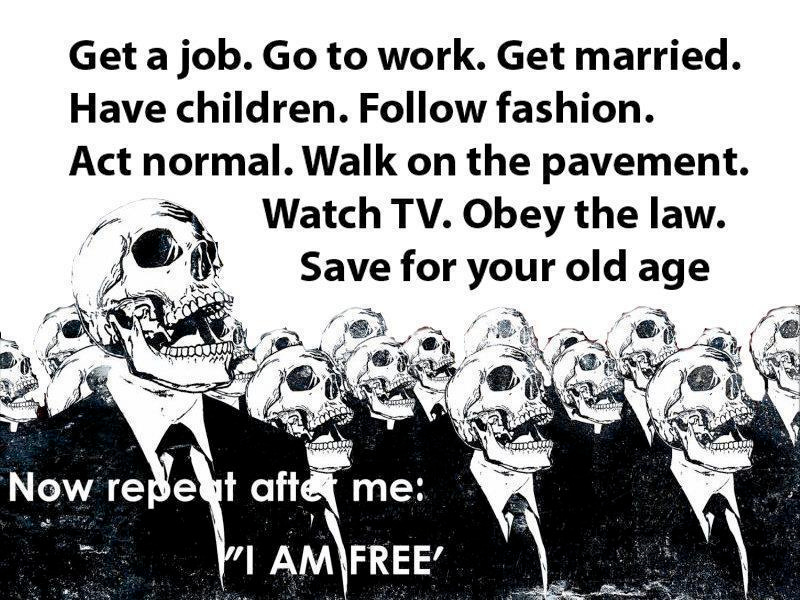It’s time to look within. This essay explores the importance of inner work and emotional resilience. Watch now to learn how to break free from the past and find your path towards better health.
Today, we will talk about the most underrated and yet crucial component of our wellbeing: Emotional Health and how to address it with Inner Work.
I’d like to start by sharing a story that I received from one of my readers.
While you read this, notice the triggers that come up for you.
Noticing your triggers is half the battle.
“I find now, at 70, I am the healthiest I’ve been in decades. The number one reason is—and I know this is going to sound horrible—my mother died in 2021.
With her death, I finally feel free of being judged, free of being misunderstood, free of being criticized, and free of never feeling good enough.
How did I cope? For most of my life, it was through eating terrible food in response to the stress she triggered in me. And that made me feel predictably worse. When she died, I decided I had to take care of myself. Pure and simple, I wanted to feel better.
So I did. I now exercise, eat a mostly plant-based diet with some protein, and try to practice mindfulness. And as I said, I feel better than I have in decades. For me, and maybe for many other people, my emotions were in control of my behavior. That has subsided significantly since my mother died. We can’t underestimate the effect that emotions have on our behavior, for better or worse. I don’t think behavior exists in a vacuum.”
An Anonymous Client
Dr. Mark Goulston, a renown psychiatrist and suicide specialist, calls it the syndrome of disavowed yearning. It is where high achievers seek external validation and later feel unfulfilled due to continued people pleasing.
Here is the point of today’s essay:
Without untangling our emotions, we can never reach an optimal state of wellbeing.
No Orange Theory workout, half-marathon, years of meditation, keto-diet, hours of intermittent fasting or climbing Kilimanjaro will give you better health if you do not start tending to your deepest wounds.
The idea is simple: Tend to your wounds and all aspects of your health will improve.
However, accomplishing it is complex.
Your physical health and your emotional liberation are like two strands of the DNA. They dance around each other and mirror one another.
Let me explain.
That is why I believe that Inner Work is the first key to health, and wrote about this before we even get into health habits (part III) and data (part IV).
The science backs this up strongly, and yet your doctor never had a single lecture about trauma. Your doctor is actually experiencing trauma in real time and may not even know it yet.
I had a severe depression while I was an intern, and felt like I lacked resources to handle it, even though I graduated from medical school with honors. I even aced my psychiatry round. A Prozac prescription was the only thing I could think of.
It helped for a short while, but then I felt numb to the experience of life. I’ve spent the last ten years learning what my body and self were communicating through the depression and making lasting changes to support both.
Before I share what we can do about inner work, let me ground you in some new realities that the top thinkers and researchers are finding out.
“The unconscious is a marvelous universe of unseen energies, forces, forms of intelligence—even distinct personalities—that live within us. It is a much larger realm than most of us realize, one that has a complete life of its own running parallel to the ordinary life we live day to day. The unconscious is the secret source of much of our thought, feeling, and behavior. It influences us in ways that are all the more powerful because unsuspected.”Johnson, Robert A., Inner Work
Let’s define (and speak about) trauma
Trauma is a word that is so overused in our politically correct world that it has lost its meaning.
We rarely use it in situations that are truly traumatic:
death row sentences
war crimes
hospital wards
child development problems/abuse
chronic disease patient visits
Instead, we use it in situations that are not considered trauma at all:
someone standing you up on a date
watching a gory video
someone having a strong political opinion opposing yours
So what is trauma?
Here is a definition by one of my personal heroes: Dr. Gabor Maté who has spent his whole life studying trauma and how it relates to our addiction, child development, chronic diseases and ADHD.
The word trauma has Greek origins and means “wound.”
As Dr. Gabor Maté explained, “It’s a psychic wound that leaves a scar. It leaves an imprint in your nervous system, in your body, in your psyche, and then shows up in multiple ways that are not helpful to you later on.”
It is a tragedy that we do not acknowledge this in society yet.
It is not what your mother or father did when you were 12. Trauma is not the bully that beat you up in the fifth grade. It is not the Nazis or the Zionists or Putin or Trump.
Trauma is the wound that your body carries today because of these past actions. The distinction is important. Trauma is not the external blunt instrument, but the internal scar tissue that formed as a result.
When we do not tend to these traumas, they live in our bodies, impact our health, and even get carried on to future generations through our Epigenetics.
You do not have to look far into society to find the reasons of why we cannot deal with our traumas collectively.
We use words like “Your precious feelings” sarcastically. We tell people to “Suck it up and continue working”. We numb mental health issues with medications instead of exploring why they are happening. We call women “too emotional” in the workplace. We tell men that our gender “does not cry”.
Welcome to the society that you live in.
In his book, When The Body Says No, Dr. Gabor Maté has defined 4 characteristics of personality that are driven by early trauma and result in disease:
In his book, When The Body Says No, Dr. Gabor Maté has defined 4 characteristics of personality that are driven by early trauma and result in disease:
1. Difficulty saying no
2.Automatic and compulsive regard for the needs of others without considering one’s own
3. Rigid and compulsive identification with duty, role and responsibility rather than with the true self
4. Habitual suppression or repression of healthy anger and assertion
Sounds familiar?
He describes that as a stress-prone persona.
Stress is a significant factor in the onset of diabetes, high blood pressure, heart disease, and cancer. But that research is…not part of medical education. Doctors are trained to understand disease as a random event usually caused by external agents — bacteria, viruses — or genetics. We’re not taught to look at patients’ formative experiences or multigenerational stress patterns. Yet both my own observations and the research literature clearly indicate that you can’t separate people’s bodies from their environments.
So what actually happens when we look in the mirror of our lives?
What heals a narcissist?
Notice the feelings that come up for you around the word narcissism.
Could you tell me why we find it so appealing to label politicians, celebrities and our exes as narcissists?
The answer is that it is easier to point our fingers at others than look at what we lack ourselves.
If you go on YouTube or ‘the gram’, you will find all these people talking about how they were victims of narcissistic behavior and warning people about it.
Let me take you back to the Greek origin of this word really quickly.
Narcissus was a hunter of great physical beauty.
He longed for love and sought many partners, but could never feel at ease with himself, no matter how much approval others gave him.
That is when a goddess seduced him into the forest and forced him to look at his reflection in the lake.
As Narcissus looked at himself, he fell in love with his own reflection for the very first time.
When Narcissus fell in love with himself, he then got swallowed by the lake and was transformed into a flower, which we now know as Narcissus.
That last part of the myth is weird, I know, but it holds the wisdom of this tale.
“Narcissism is a condition in which a person does not love himself.” Thomas Moore, Care of the Soul.
From this lens, the cure to narcissism (which is defined by an empty, unfulfilling life) is to look in the mirror and have your beauty reflected to you.
To improve our health and start living more fulfilling lives, we need MORE self-love, not less.
Narcissus is you, me and every human: We all want to be loved. The lake is inner work. The flower is a healthy life.
“Pain is inevitable, but suffering is optional” A buddhist saying made popular by Haruki Murakami
Darkness is the absence of light
Darkness does not exist as a unique physical entity.
Only light waves do.
The absence of light waves is what creates darkness, and most of us are traveling through our emotions in the dark.
“Shame hates having words wrapped around it. If we speak shame, it begins to wither. Just the way exposure to light was deadly for the gremlins, language and story bring light to shame and destroy it.” Brene Brown, Daring Greatly.
Your job is to shine a little bit of light every day, and to start understanding what is in there.
You may not like what you find, you maybe disgusted, you may tap into a feeling of self-loathing that is quite hard to fathom.
If you do – then you are doing it right.
It will get more palatable with time.
Remember that light can also be blinding, so take it one step at a time.
There are plenty of ways to explore our traumas and bring healing (or light) to ourselves. There is no ONE way, or ONE method.
It is more about cultivating a way of being.
Start somewhere.
Start today.
An easy and effective approach to inner work
At its core, inner work is getting to know yourself. Looking in the lake is something you can do alone, or with a facilitator.
I will cover a lot of the methods of inner work that have been proven to work over the next few months, but for now here is a very simple and helpful way to start practicing this everyday and to get to know yourself.
A simple and safe method to get you started:
Set 10 minutes aside every day. Best if this is the first thing you do in the morning.
Ask yourself: Who is Here?
Start writing whatever comes up in response. Treat this as though you are getting to know someone.
See if you can identify that voice that is responding to you as a personality that has needs, fears, desires, and so on.
Write it out as a dialogue that is between you and that part. Imagine yourself writing a script.
Treat it like a friend who came to visit you and needs to get something off their chest.
Do not overthink it. Do not think at all. Just write whatever comes up until the timer ends.
Be welcoming to that part of you that answers your initial question.
See if you can give it space to express what it wants.
If you judge what is coming, note that, and keep going.
Your goal is to be friends with that part of you.
In the end, thank that part of you for showing itself.
Tomorrow, it might be the same part or a different one.
Do it for a week, and see how many sides of you show up.
I am writing this series while launching my practice in San Francisco to put this proven health framework of inner work, health habits and data into practice with a handful of clients.

Further Reading:
Start following Dr. Gabor Mate, and read his books: When the body says No, and Myth of Normal.
Read about Internal Family Systems and “Parts” psychology by reading No Bad Parts, and watching this Dick Shwartz and Rick Roll podcast.
Learn about Somatics from my last Gumpcast guest: Staci Haines and her book: Politics of Trauma.
Learn about psychedelics and how to explore them safely (and if they are right for you to begin with)
Learn about Shame from Brene Brown’s The Power of Vulnerability lecture series/audiobook.
Other excellent readings for more advanced gumption seekers: Care of the Soul, The Tibetan book of Living and Dying.
Listen to Awareness
See you next Sunday where we will dig into the myth of motivation, which kills our habits early in their development.






